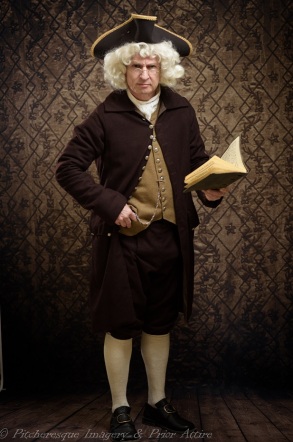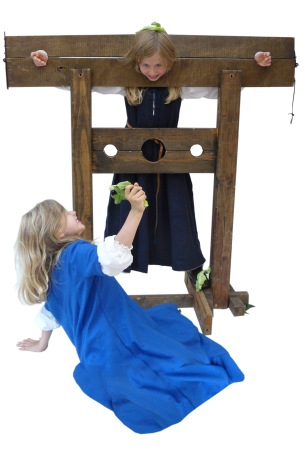 This interactive talk is run as a series of trials where the audience are put on trial for their crimes. We start with medieval crimes and with a short quick change in the middle, we switch to 18th C Georgian crimes. This talk requires about 20 willing souls (good sports) to be put on trial for the various crimes. This will require them to stand (or sit) up the front as they are put on trial, (so may not be the right talk for more timid audiences as audience interaction is key).
This interactive talk is run as a series of trials where the audience are put on trial for their crimes. We start with medieval crimes and with a short quick change in the middle, we switch to 18th C Georgian crimes. This talk requires about 20 willing souls (good sports) to be put on trial for the various crimes. This will require them to stand (or sit) up the front as they are put on trial, (so may not be the right talk for more timid audiences as audience interaction is key).
Medieval Trials
In the medieval trials we start by looking at Trial by ordeal. We look at trial by fire, trial by cold & hot water, trial by ordeal and trial by sacrament. We also look at various punishments such as branding, stocks, pillories and hanging. We learn what happened to a scold if caught nagging and we finish by looking at some of the strange animal trials that took place.
 18th C Trials
18th C Trials
After a brief quick change Wel will return to conduct some 18th C trials. The broadsheets in the 18th century often sensationalized the worst and bloodiest crimes and were responsible for increasing peoples fear of crime. This meant that after 1723 more crimes were made capital offences and could result in death. Under the ‘Bloody Code’ over 200 different crimes could result in death. It was up to those on trial to prove their innocence and juries were often sympathetic to these over the top punishments. They would often either find the person not guilty, or claim the value of stolen goods was less than originally stated (thus reducing their sentence to transportation). We look at some of the punishments such as transportation and branding and some of the crimes particular to that era such as highway robbery. We’ll also learn about the infamous body snatchers, who stole bodies from graveyards. Was it a crime to steal a body?
We will require a preferably discreet area for Wel to change into 18th C clothing, behind a screen or in a separate room etc. It is not essential but adds to the ambience if the change is not observed.

You must be logged in to post a comment.